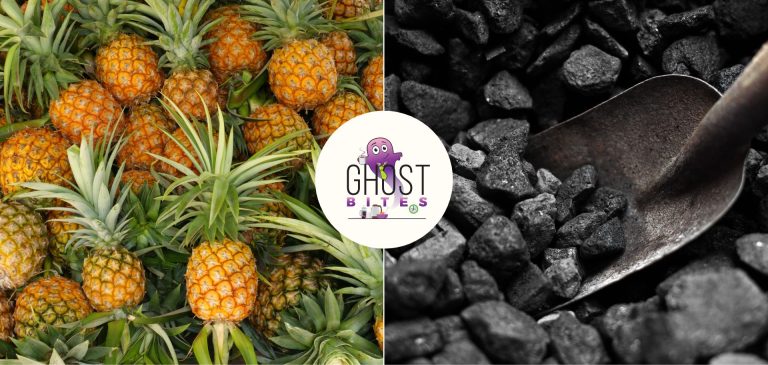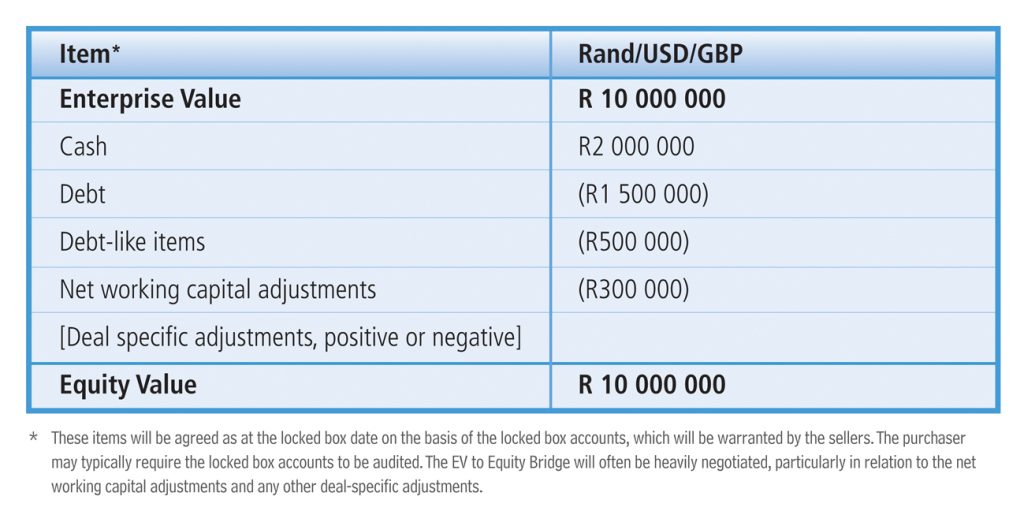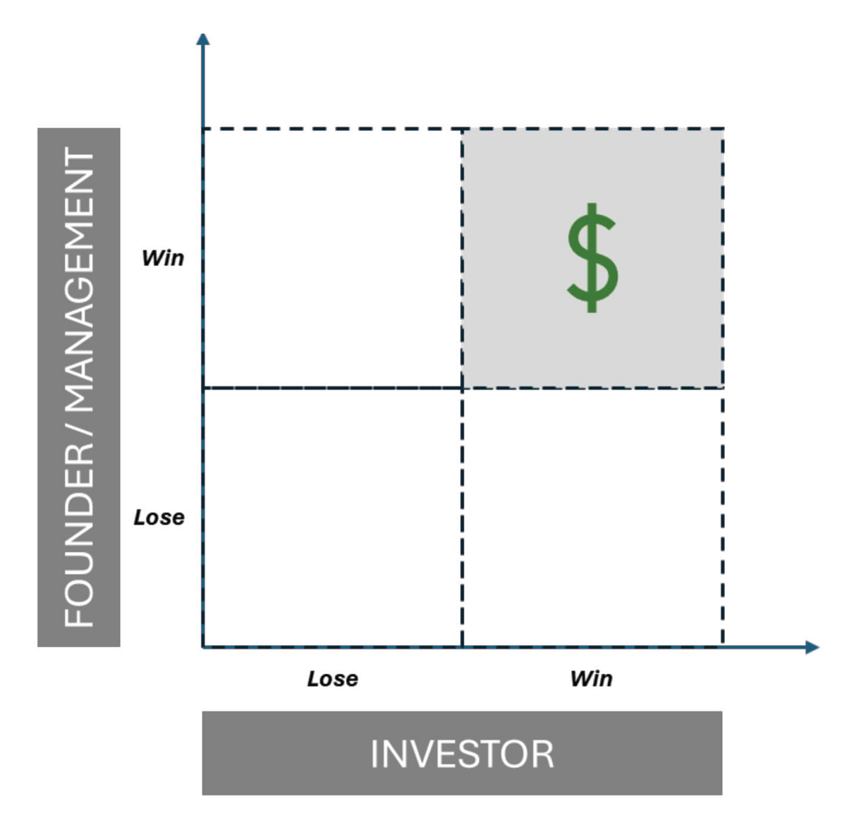African Rainbow Capital pulls the trigger on the delisting offer (JSE: AIL)
They’ve been talking about this for a while
Aah, what could’ve been. With all the excitement around the Tyme Group, I imagined a world where African Rainbow Capital (ARC) stayed listed and Tyme was one day unbundled and separately listed as a lovely growth asset on the JSE. I was clearly dreaming, or just confused for a moment about the difference between the local market and the US market.
Alas, what will happen instead is that shareholders will now have to contemplate an offer of R9.75 per share, which is a 21.0% premium to the 30-day VWAP and a 22.8% discount to the net asset value (NAV) per share that ARC just announced in its interim earnings.
As an aside, they are also looking to move the structure away from Mauritius. Many South African companies went and put holding company structures in place in Mauritius in the hope of getting some protection from South African risks, while being in a jurisdiction where it is easier to do business. In fact, Mauritius usually ranks top of the list on that “ease of doing business” index. It’s just a pity that the ocean around the island is a lot deeper than the capital pools, with ARC noting that absolutely no international funding was raised as a result of the Mauritian structure. In fact, they are now sitting with tax inefficiencies, so it really hasn’t worked out for them.
The ownership structure of ARC is a web that any spider would be immensely proud of. The TL;DR is that Ubunto-Botho Investments (UBI) controls 60.51% of the shares in ARC, so the offer to delist ARC is being made to the remaining ~40%.
Although the performance got very little attention in comparison to the news of the offer, ARC also released its interim results for the six months to December. The intrinsic NAV per share increased by 3.2% over six months. There were substantial net fair value gains, including in the financial services portfolio (Tyme Group Asia / Alexforbes / Sanlam Third Party Asset Management) and the diversified investment portfolio (Rain / ARC Investments / BlueSpec / Acorn Agri / Linebooker). As has been the recent trend, Kropz required more capital and saw a decrease in fair value of R229 million.
Rain may be the largest investment in ARC Fund, but I still think TymeBank is the most interesting. ARC actually took up proportionally more shares in TymeBank SA than in Tyme Global, so they are still keen for an SA growth story here. And why not? Deposits grew from R6.3 billion to R6.9 billion over just six months, while net advances increased from R1.9 billion to R2.3 billion. It’s a very impressive story. Despite this, the fair value of TymeBank actually decreased over the period, while the value of Tyme Global went up.
Perhaps shareholders shouldn’t be too irritated about losing out here. Tyme Group may be 16.3% of ARC Fund’s value, but problem child Kropz Plc is 12.7% of the value and therefore almost as important as Tyme. Cash flow shortfalls continue at Elandsfontein, with ARC having to chip in more capital during the period.
The ARC share price has doubled in the past year, driven by factors like excitement around some of the underlying assets (especially Tyme), improved SA sentiment under the GNU and perhaps most of all, the knowledge in the market that this delisting offer has been waiting in the wings for a while.
Will appraisal rights turn out to be the Achilles’ heel here? When the board has put out the NAV and the offeror has made an offer that is well below that number, I’m not sure how it can be argued in an appraisal rights scenario that the NAV isn’t the fair value that shareholders should be paid. There are some strong activist investors in the local market who have a deep understanding of how this works. Let’s see how it all plays out.
More double-digit growth at Bytes Technology Group (JSE: BYI)
The market absolutely loved this
Bytes Technology Group has had a tough year in its share price. At least the 12-month move is now a drop of only 10%, thanks to a strong rally of almost 13% in response to the release of a trading update.
Bytes is one of the UK and Ireland’s leading technology companies, so all the numbers are reported in GBP. Keep that in mind when you consider how impressive it is to have achieved double-digit growth in not just gross invoiced income, but also gross profit and operating profit.
One of the concerns at Bytes has been margins, which you can assess based on the difference in growth rate between gross invoiced income and gross profit. This is a challenge faced by IT businesses that are often resellers of products – it can become a race to the bottom for margins. I think it made a big difference to the market response to this announcement that the company included a note that gross profit growth was strong in the second half, putting some of the margin concerns to bed. Cash conversion was also solid, so that would’ve added to the positive sentiment around this announcement.
Finally, the company is telling a positive story around its growth prospects, including in an environment of a new Microsoft incentive plan. Full year results are due for release in May, so the market can chew on this narrative for a good few weeks until then.
Very little for Libstar investors to get excited about (JSE: LBR)
There’s very generic disclosure about “unlocking value”
Libstar already alerted the market to its troubles in a previous update, so the release of results for the year ended December 2024 simply confirms what the market already knew.
It’s very much a tale of two segments, with Ambient Products growing revenue by 5.4%, experiencing a decrease in gross margin of 10 basis points (not too bad) and seeing normalised EBITDA growth of 12.2%. Over at Perishable Products, revenue growth was 1.2%, gross profit margins fell from 16.7% to 16.1% and normalised EBITDA was 13.7% lower. Perishable, indeed.
It’s therefore clear to see that Perishable Products is where the damage was done. In case you missed it the first time when Libstar told the market about the problems, the major issue relates to a food service customer who was buying beef from Finlar Fine Foods, one of the many businesses within Libstar. This drove a huge impairment of R400 million in that business as well as a negative impact on cash profit generation.
The net result is that on a normalised basis, Libstar had a pretty flat year. Normalised EBITDA was almost identical to the prior year and normalised HEPS fell 6.5%. The dividend was maintained at 15 cents per share, with the group trying hard to give some support to a share price that is down over 18% this year. Remember, these normalised numbers exclude the impact of the impairment. You’ll see that come through in earnings per share, which swung sharply into a loss-making position.
One of the biggest concerns for me is that expenses were up 7%, which they attribute to consulting fees, the launch of a culture program and fees for divestment advisors. Libstar is clearly spending a lot of money on external help, which tells me that the management team is spending more time deciding where to place the various Lego blocks than actually driving growth within the business units. There’s more of this to come, with further restructuring activities within the group to shuffle the chairs.
There’s a chance of something big being announced, as Libstar has included some generic commentary around unlocking stakeholder value and potential strategic options that are being assessed. Could this mean a delisting? Or major disposals? Either way, the consultants certainly aren’t being paid with cheese. Cold, hard cash is leaving the group while they figure out what to do here.
Honestly, it’s anyone’s guess what could be coming. And the market doesn’t love guessing.
Master Drilling has flagged interesting numbers (JSE: MDI)
Impairments are a worry
Master Drilling released a trading statement for the year ended December 2024. On a HEPS basis, which excludes impairments, they look great! Reported in ZAR, HEPS will be between 16.4% and 26.4%. Master Drilling also includes USD earnings, in which case HEPS is up by between 17.2% and 27.2%. Either way, those are strong growth rates.
You may then wonder why the share price is up just 9.5% in the past 12 months. Aside from the negative impact of low liquidity in the share price, I think the market is concerned about the impairments due to expensive equipment not being used due to market dynamics. This is why earnings per share (which is net of impairments) has moved between 10.5% and 20.5% lower in ZAR. The Reverse Circulation equipment in the American business and the Mobile Tunnelboring Machine have both suffered impairments.
Detailed results are due for release on 25 March.
No real excitement at Old Mutual (JSE: OMU)
The underperformance vs. rivals like Sanlam continues
Old Mutual’s annual results announcement starts off with a “reflection on shareholder value creation” since 2018 – a surefire sign that the latest growth isn’t exciting, hence they need to remind you of the journey they’ve been on. The share price chart always does the best job of summarising the journey, with Old Mutual up 6% over five years (i.e. since COVID lows) and rival Sanlam up 60%. That’s 10x outperformance by their rival!
Old Mutual’s results from operations increased by 4%. Take out the “new growth initiatives” and the increase is 10%, so they are investing heavily in the business and it is impacting profits. I still cannot really understand why they are starting a bank, or what exactly it is going to do differently in South Africa.
It’s interesting to note that two-pot withdrawals were R3.4 billion and that net client cash outflows were R21.5 billion. Africa and Corporate saw much larger client withdrawals, a handy reminder of how important the big clients are vs. lots of small ones.
Sure, there are some pockets of growth, like funds under management up 10% and gross written premiums up 7%. It’s just clear that Old Mutual’s underlying exposure isn’t working as well as its rivals. With the bank only expected to break even in 2028, I can’t see a catalyst for this share price to close the gap to Sanlam.
CEO Iain Williamson is taking early retirement after five years in the top job and a career of 32 years with the group. By the time this bank breaks even, he would’ve made a great deal of progress on his golf – or whatever else tickles his fancy.
Remgro’s direction of travel is up (JSE: REM)
And if they would use a more helpful metric for trading statements, we would really know by how much
I really wish that Remgro would stop using HEPS for trading statement purposes. They are clearly an investment holding company at heart, so why not use NAV per share?
Shock and horror, there’s a huge move in HEPS (which always flaps around in investment holding companies that take this route) for the six months ended December 2024, impacted to some extent by significant corporate actions in the comparative period. It doesn’t really tell us much that HEPS is up by between 33% and 43% vs. the restated number for the comparative period. All it tells us is that NAV per share (the metric people actually use) probably went up as well, since the underlying businesses are clearly having a better time of things.
The restatement of the base period was significant by the way, driven by an error in how TotalEnergies South Africa was accounting for its investment in Natref. Remgro’s comparable HEPS has been restated from 381 cents to 485 cents. Again, none of this is actually very helpful for investors, other than to figure out that the direction of travel is up.
Resilient is living up to its name (JSE: RES)
Mid-single digit growth is the expectation
Resilient REIT released results for the year ended December 2024. With the total dividend for the year up by 8.4%, it was a very decent year for the group. As a reminder, Resilient holds a direct portfolio in South Africa and Europe, as well as a 30.4% stake in Lighthouse after supporting a recent equity raise and electing a scrip dividend.
The South African portfolio grew net property income by 7.5%, benefitting from the energy investment strategy that has helped keep energy cost inflation below in-force escalations on leases. The offshore investments contributed to growth, with forward exchange contracts helping to turn the Lighthouse Properties dividend from a 4.9% decline in euros into a 4.1% increase in rand. The French portfolio did the real heavy lifting in the offshore portfolio though, with net property income growth of 14.3%.
The South African retail portfolio increased sales by 3.5% for the year, an uninspiring result that was negatively impacted by the performance of the mining industry and the impact this had on some of the small town malls. Resilient’s portfolio is focused on lower income areas, which is a decent growth area when viewed over multiple years. This doesn’t make it immune to a slow year or two. Notably, the last quarter of the year saw an increase in retail sales of 5.5%, boosted by two-pot withdrawals.
The French portfolio was a story of vacancy reduction rather than underlying growth in sales. Comparable sales increased by just 1.8%, but a reduction in vacancies from 7.9% to 5.8% worked wonders. In contrast, the portfolio in Spain achieved comparable sales growth of 12.8% and had a vacancy rate of just 0.1%, so you can see why property funds are pushing into Iberia.
Looking ahead to 2025, the board is expecting growth in the distribution of 5.5%. As inflation protection goes, Resilient is doing a solid job.
Schroder European Real Estate’s valuations are still under pressure (JSE: SCD)
And no provision has been raised for the tax fight in France
Schroder European Real Estate has released its net asset value and dividend for the quarter ended December 2024. The financial year-end is September, so this is the first quarter of the new year. Alas, it’s not off to a great start, with the NAV down 0.6% for the quarter and up just 1.3% over 12 months.
The NAV decrease was driven by a 0.9% dip in the direct property portfolio valuation. I had to laugh at them referring to this as a “marginal” decrease – a 0.9% reduction in value over just 3 months in Europe is anything but marginal on an annualised basis!
They also aren’t applying any caution at all with respect to the French Tax Authority claim, with no provision raised – not even a small one. Maybe things are different in Europe, but tax disputes usually end in a settlement rather than absolutely no outflow. Schroder believes that an outflow is not probably and hence no provision has been raised.
At least the balance sheet is healthy, with the loan-to-value down from 25% to around 20% thanks to disposals.
Super Group expects to see improvement, but there are no guarantees (JSE: SPG)
The underlying exposures make it tough to judge where this one is going
Super Group has released results for the six months to December 2024. It wasn’t a happy time for them, with revenue down 7.6% and EBITDA down 5.2%. By the time you reach HEPS, the drop was a nasty 24.2%.
The underlying exposures are problematic. The supply chain business in South Africa is vulnerable to issues like border and port delays, as well as the state of the mining industry. It saw operating profit fall by 10.7% for the period. Supply chain in Europe was much worse, with terrible automotive production levels in the UK and a swing from an operating profit to an operating loss – luckily, a small one. If you can believe it, automotive production levels in the UK are now in line with 1956 levels. Astonishing.
The dealerships business in South Africa saw operating profit fall by 4% as the Chinese brands caused disruption. Super Group at least has some Chinese brand dealerships now, but probably not enough of them. Dealerships UK was a disaster, swinging into a horrible loss thanks to pressure on Ford, Hyundai and Kia. I’ll say it for the zillionth time: the Chinese are changing everything.
The only highlight in this period was the fleet business in Africa, growing operating profit by 8.7%.
They are hoping to have a better end to the year than we saw in this interim period. The underlying Super Group portfolio just doesn’t seem to be well positioned in the current market.
Nibbles:
- Director dealings:
- Acting through Titan Premier Investments, Christo Wiese executed a substantial purchase of R42.6 million worth of Brait (JSE: BAT) shares.
- Des de Beer has his finger firmly on the buy button, picking up another R5.6 million worth of shares in Lighthouse Properties (JSE: LTE).
- The chairman of NEPI Rockcastle (JSE: NRP) bought shares worth R583k.
- The CEO of RCL Foods (JSE: RCL) bought shares worth R208k.
- The CEO of Frontier Transport Holdings (JSE: FTH) bought shares worth R75k.
- Here’s some good news: Grindrod (JSE: GND) announced that the deal to dispose of the North Coast Property Loans and Investments for R500 million to African Bank has met all conditions and will close on 20 March. That’s both a clean-up for Grindrod and a boost to the scale ambitions of African Bank.
- Ethos Capital (JSE: EPE) released a presentation on its Optasia investment. This is a fintech company with a particularly strong footprint in Africa. It’s not the simplest business to understand, with the presentation available here if you would like to dig in.
- Numeral Ltd (JSE: XII), one of the most obscure listings on the JSE, has appointed a non-executive director who brings significant experience in the corporate finance industry. Will we see some dealmaking here? On a market cap of R12.4 million, even acquiring your favourite local restaurant would probably be a categorisable transaction!


















